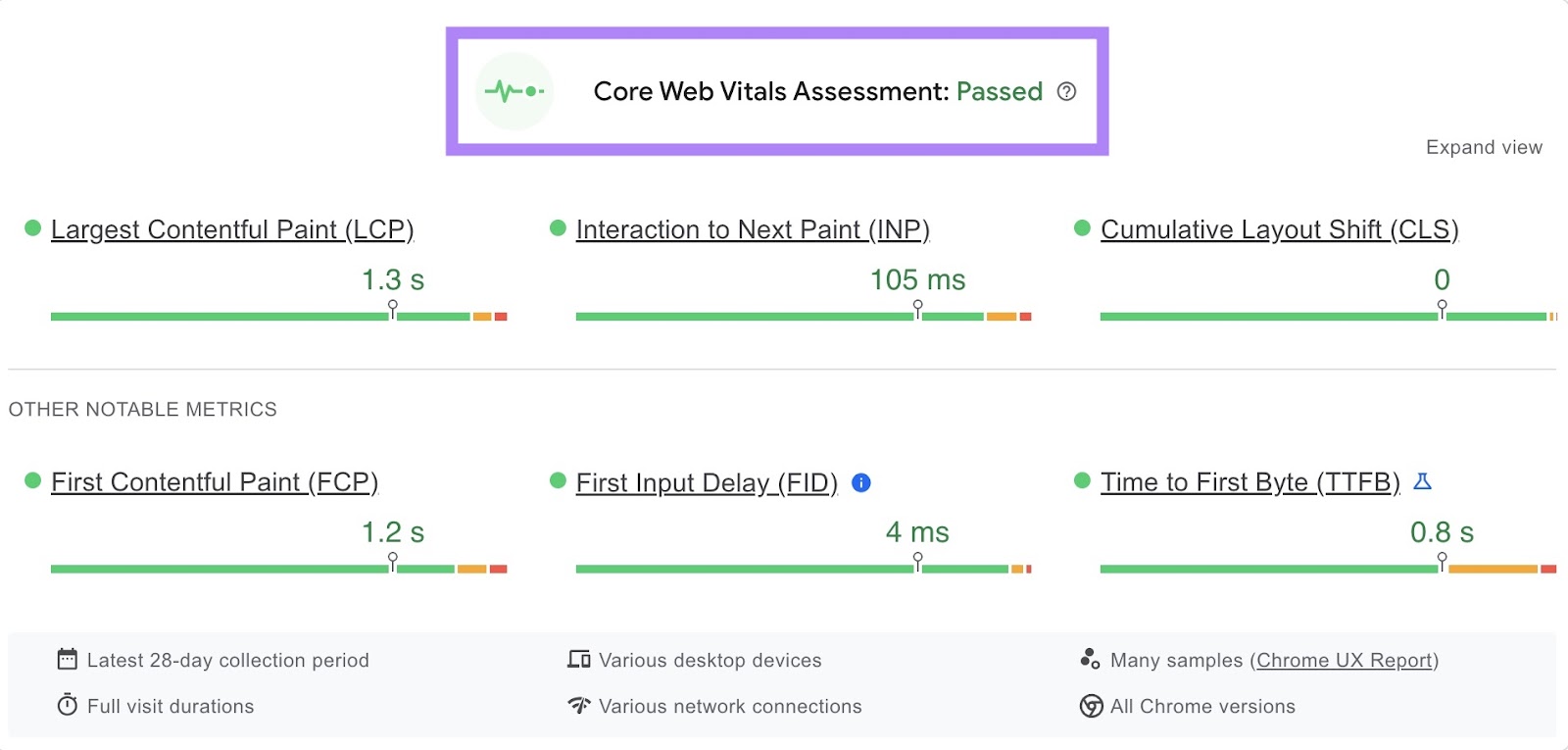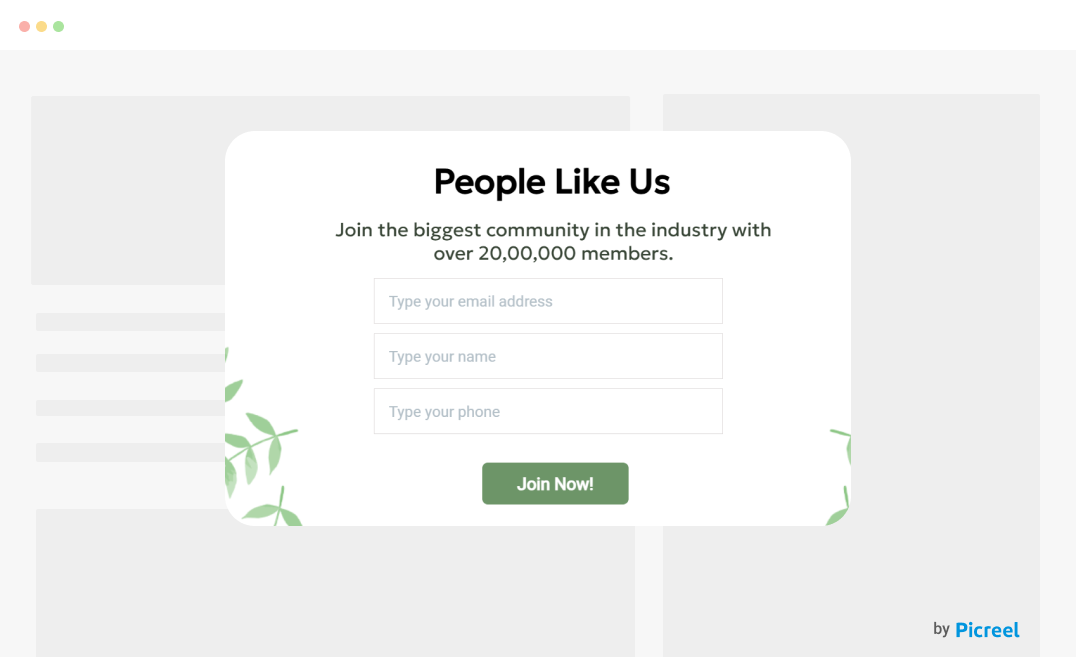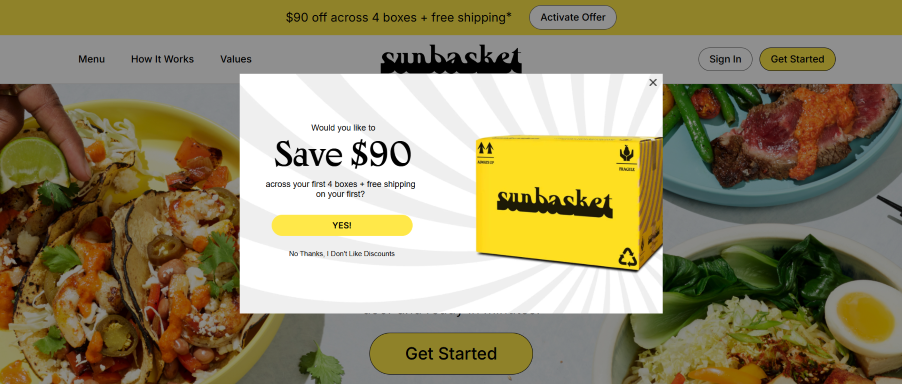Over the past eight years in the industry, I’ve worked with and connected to more than 200 founders and marketers, and one theme has repeatedly emerged: generating quality leads is harder than ever.
Traffic is easy to buy, but most businesses get stuck on how to generate leads. I’ve often seen entrepreneurs pour money into ads, build websites, or try every new tool, only to end up with leads that don’t convert.
You see, the problem isn’t a lack of tactics—it’s knowing which ones work and how to apply them without draining your time or budget. Customers now bounce between channels, expect instant engagement, and trust proof over promises. That means lead generation today requires a smarter mix of proven strategies and modern tools.
This guide combines the most effective approaches I’ve seen top businesses use to consistently attract, nurture, and convert leads into loyal customers.
What Is Lead Generation in Marketing?
Lead generation in marketing is really about collecting contact details from people interested in what you offer. There are many effective ways to generate leads for your business, from simple popups and surveys to chatbots and webinars.
The truth is that most visitors are not ready to buy the first time they land on your site, and walk away without taking action. That is where exit intent popups, interactive quizzes, and lead magnets like ebooks, discounts, or free trials come in handy because they give people a reason to share their information.
The bigger goal is simple: make your brand visible, easy to connect with, and trustworthy across different channels so visitors feel comfortable engaging with you and you turn casual browsers into qualified leads, helping you build a customer base.
Why Is Lead Generation Important?
For a business to grow, its customer base should also grow, and leads play a crucial role in making this happen. More leads mean more customers, more revenue, and, in turn, more profit.
Here are some more benefits of lead generation.
- Expand Your Market: Lead generation helps you learn more about your prospects, which leads you to target different categories of customers. It allows you to expand your business into new markets by running targeted campaigns for different audiences. This eventually drives more traffic and increases your customer base.
- Build Brand Awareness & Visibility: Creating awareness and visibility is vital for businesses to thrive in this competitive environment. When you work on your lead generation strategies, you will be creating quality content to draw the attention of potential customers and gain a good ranking on search engines.
- Reduce Cold Calling & Emailing: When you get hot leads from your target audience, you can reduce ineffective lead generation methods such as cold calls and emails. This will allow your sales team to focus on closing more deals, and they can invest their time into knowing the potential customers better.
- Boost Your Revenue: When you capture the attention and contact details of potential customers through the right offers and messaging, you get qualified leads. This makes it easier for your sales team to convert them into customers, eventually improving your sales, revenue, and business growth.
- Prepare a Strong Base for Email Marketing: Email marketing is one of the sharpest weapons in this digital era to redirect existing and potential customers to your website. When you generate leads, you make those prospects a part of your email family, where you make announcements, send customized offers, and engage customers. To make your communication with email leads more effective, pay attention to the DMARC quarantine to ensure that your messages will be delivered to the email recipients’ inboxes.
Now that you understand why lead generation is important, let’s get right into how to generate leads in sales!
13 Effective Ways to Generate Leads for Your Business
There isn’t one single way to generate leads anymore. Buyers jump between websites, ads, emails, and communities before deciding, so you must meet them at different touchpoints.
The good news is that there are plenty of practical strategies for generating leads, from quick website tweaks to interactive content and multichannel campaigns that capture attention and guide people toward becoming leads.
Before we discuss the top 12 strategies for generating leads in detail, here’s a quick table highlighting how each strategy works and which industries it best suits.
| Strategy | How It Works | Suitable Industry |
|---|---|---|
| Optimize Your Website | Improve speed, mobile design, CTAs, trust signals, and popups to boost conversions. | E-commerce, SaaS, Local services, Professional services |
| Use Exit Popups Smartly | Trigger exit-intent offers like discounts, ebooks, or trials before visitors leave. | E-commerce, SaaS, Education, Online marketplaces |
| Revamp Old Content | Refresh blogs, ebooks, and landing pages with updated stats, visuals, and CTAs. | All industries (especially B2B, SaaS, Education) |
| Leverage High-Value Lead Magnets | Offer quizzes, ebooks, checklists, or free trials in exchange for contact details. | E-commerce, SaaS, Insurance, Education, Coaching |
| Run Multichannel Campaigns | Use SEO, PPC, and social channels together to lower CPL and capture diverse leads. | B2B, SaaS, Agencies, Retail |
| Generate Leads from Communities | Engage on Reddit/Quora by answering questions, then guide users to your landing page. | Startups, Agencies, Tech services, Local businesses |
| Tap into Referrals & Partnerships | Incentivize referrals and collaborate with non-competing businesses. | E-commerce, SaaS, Local services, Consulting |
| Integrate Live Chat & Chatbots | Use chat support and AI bots to answer questions, qualify leads, and book demos. | E-commerce, SaaS, B2B services |
| Host Educational Webinars | Run webinars on niche topics to educate, engage, and capture sign-ups. | SaaS, Staffing, Consulting, Education |
| Create a Sense of Urgency | Use countdown timers, limited-time offers, and flash sales to drive action. | E-commerce, SaaS, Events, Subscription services |
| Host a Giveaway or Contest | Use tools like Rafflecopter/Gleam to collect emails via prize-based contests. | E-commerce, Retail, Local businesses, SaaS |
| Write Guest Posts | Publish on niche sites, include CTAs/UTM links, and drive referral traffic. | B2B, SaaS, Insurance, Staffing, Agencies |
| Generate Leads on LinkedIn | Use LinkedIn posts, InMail, and groups to connect with decision-makers and drive leads. | B2B, SaaS, Consulting, Professional services |
Now, let’s understand each lead generation strategy in detail:
1. Optimize Your Website for Conversions
Almost all visitors leave a website without doing anything, so minor tweaks can make a big difference in turning them into leads. Using the right CRO tools, including AI Website Building, you can optimize your website elements, widgets, graphics, and content to capture visitors’ attention.
Here are some you must consider:
- Speed: A website’s speed influences whether they decide to buy, making it non-negotiable when trying to generate leads. So, test your site using [Google PageSpeed Insights]. At the top of PageSpeed Insights, you’ll see whether your site passes the Core Web Vitals assessment, which measures loading speed (LCP), responsiveness (INP), and visual stability (CLS).

If load time is over 3 seconds, try finding reasons, consider Google’s recommendations to spot issues, and apply fixes such as optimizing images, simplifying code, or reducing server response time.
- Mobile-Friendly Design: Open your pages on a phone. Use responsive templates (from WordPress, Wix, or Webflow) so text adjusts automatically, buttons are large enough to tap, and forms resize without zooming.
- One Clear Call to Action: A clear CTA like “Sign Up Free” or “Get a Quote” can boost conversion rates by 141%. So, I recommend adding it above the fold with a simple button (create it using your site builder’s CTA widget) and repeat it at the bottom of the page. Here’s an example of a clear “Get Started Free” CTA:

- Build Trust: Add reviews using a plugin like Trustpilot or Yotpo, place secure payment badges provided by Stripe or PayPal at checkout, and show live sign-up counts with social proof widgets. All these plugins are available to download on your CMS, like WordPress. If you’re using website popups, the simplest way to build trust and generate leads is to create a social proof popup using Picreel that shows up only to your desired audience. Thanks to advanced targeting and smart triggers. It looks something like this:

Another critical aspect of building trust is telling your audience how you’ll use their data, using GDPR compliance consent checkboxes.
Note: Some suggested changes are simple and free, like adjusting layouts or compressing images. If you’ve got some budget, you can layer in tools like popup software, review plugins, or even full CRO and AI website builders to personalize more deeply.
To check if the changes are bringing results, track site performance in Google Analytics or your site dashboard. You can do that by monitoring conversion, bounce, and CTA click-through rates and comparing numbers before and after the changes.
2. Use Exit Popups Smartly
Exit popups give you one last chance to connect with visitors before they leave. They don’t feel intrusive when designed well, especially if you offer real value. Businesses see an average 11 percent conversion from popups, and exit-intent can save up to 15% of visitors who would otherwise slip away.
Here’s a quick yet detailed video guide to help you launch exit popups in minutes:
Just make sure to keep them simple. Ask for minimal details, use a clean design, and share something worth the exchange, such as a discount code, free ebook, or trial access. Tools like Picreel make setup easy, and you can send leads straight to Mailchimp or another email platform for follow-up.
I say that because Grivy, one of my clients and Indonesia’s largest marketplace for local consumer services, boosted its leads by over 57% using Picreel’s exit popups. By syncing captured emails directly with Mailchimp and offering personalized deals, they not only built a strong list but also converted 22% of those leads into registered users.

You can also get such results with strategic and timed popups. Once you create and launch your popup, always track performance like click-through rates, cost per lead, and conversions to ensure your popups are delivering results. Another cherry on top is that Picreel offers all the basic to advanced features, like advanced targeting and analytics, under the free plan. So, regardless of your budget and needs, it’ll work for you.
3. Revamp Old Content
Some of your best lead opportunities may already be sitting in your archives. Old blogs, ebooks, or landing pages that once brought traffic can feel outdated, but with a little refresh, they can start pulling in qualified leads again.
Updating stats, headlines, and visuals improves SEO, keeps you relevant in search results, and reassures visitors that your business is active and trustworthy—two factors that directly influence whether someone is willing to share their contact details.
Start by identifying which pages get steady traffic using tools like Search Console. Just type in your domain or URL, and you’ll see reports showing which pages bring visitors and how they perform.

Look for posts that rank but don’t convert well, then give them new life: turn a blog into a lead magnet like a guide or checklist, expand an FAQ into a downloadable resource, or add a stronger call-to-action that points visitors toward your offers.
Free tools are enough to spot opportunities, while premium platforms such as Semrush uncover new keywords worth targeting. You just have to type in your domain and it will give you all relevant keywords.

4. Leverage High-Value Lead Magnets
Among the most effective ways to generate leads for your business, offering a strong lead magnet stands out because people are more willing to share details when they see clear value. An effective lead magnet feels like a win for them, not just another opt-in form.
Start Simple:
- You can integrate interactive quizzes on one of your LPs or social media to engage and convert leads. I usually use ProProfs Quiz Maker’s AI or templates to create one in minutes. I love that it’s free and intuitive.
- Create resources people actually want, like discount coupons on your products. For example, if someone visits your pricing page twice but doesn’t sign up, set up an exit-intent popup offering a free demo or a “first month free” deal.
- In case you want to offer ebooks, checklists, or templates (which convert at nearly double the rate of static offers), consider using ChatGPT.
Here’s a prompt I have created that you can tweak and use based on your needs to build converting lead magnets.

- Strategically place them on landing pages or blog posts, using popups and overlays with smart triggers like exit intent and clicks. For example, if your visitors are browsing blog posts about insurance, show them a tailored guide like “Top 5 Coverage Mistakes to Avoid in 2025” instead of a generic ebook. I recently saw this attractive lead magnet popup by Sunbasket that I signed up for. Feel free to take inspiration from more real-life brands:

- Include fewer and most important fields like name and email to drive maximum signups.
5. Run Multichannel Campaigns
Leads rarely come from one place. People bounce between Google, Instagram, LinkedIn, and email before they ever consider buying. That’s why using a mix of SEO, social, and PPC can lower your cost per lead and keep you in front of prospects wherever they are.
The easiest way to start is small and focused:
- SEO: Think about what your customers would type into Google if they were looking for you. Use a free tool like Keyword Planner, pick 3–5 phrases, and turn each into a simple blog post or short guide that answers their question directly. This will make you rank higher on Google and generate organic traffic and leads.
- Social Media: Instead of trying to be everywhere, pick one platform your audience actually scrolls on, like Instagram. Check Google Analytics to see which social platforms send you traffic, or simply create survey popups using Picreel to ask customers where they spend time online.
Focus on one particular channel, like YouTube, and post YouTube Shorts on quick tips, how-to videos, or customer stories with a subtle mention of your product in your post or description. This will generate leads. You can additionally tell about the ongoing offers or run a retargeting ad that points them to a special offer. Here’s a popup survey I recently used on my website for the same purpose:

- PPC: You don’t need a huge budget. Even $10 a day on Google or LinkedIn works if you target high-intent phrases (like “best [service] near me”). Write ad copy that mirrors the search term, then send clicks to a landing page designed only for that offer—not your homepage.
6. Generate Leads from Communities like Reddit and Quora
Reddit and Quora are places where people ask real questions and vent about real problems. That makes them a goldmine for leads—these conversations are often higher intent than cold emails or generic ads. If you show up with helpful answers, you’re meeting people at the exact moment they’re looking for solutions.
Here’s how to get started:
- Listen First: Spend a week browsing threads or questions in your niche. Notice what people complain about and what they ask most often. For instance, I often read about pop-up marketing, and most people find it annoying. I recommend using Picreel’s Hello Bars and exit intent pop-ups, giving them an enticing offer to use it for free.
- Join in With Value: Answer questions clearly, share examples, and only link to your resource if it genuinely helps. Over time, your profile itself becomes a trust signal.
- Guide to Next Step: Point interested readers to a simple landing page with a lead magnet, and use a tool like Mailchimp to nurture them with follow-up emails. I use it to run all my campaigns’ email sequences:

The best part is that you don’t need any budget to generate leads through communities unless you want to speed things up with sponsored Quora answers or Reddit ads. That makes it an excellent fit for businesses on tight budgets.
Track how many clicks your answers drive, how many sign-ups you capture, and the conversions that follow. This will show you which communities bring in the most qualified leads so you can focus your efforts there.
7. Tap Into Referrals and Partnerships
Referrals work because people trust people. Buyers are about 90% more likely to purchase when a friend recommends a business. Yet many companies don’t ask, missing out on some of the easiest, highest-quality leads. Partnerships are another overlooked channel since they let you reach new audiences by teaming up with businesses that complement, not compete with, yours.
Here’s how you can make it happen:
Referrals: Ask customers right after they’ve shown satisfaction, such as leaving a good review or making a repeat purchase. You can add a quick referral question in a post-purchase survey with ProProfs Survey Maker, or even display a targeted popup with a shareable link using Picreel.
Sweeten the deal with a small thank-you, such as a discount or gift card, to encourage action. Also, don’t forget to do referral tracking to check the efficiency of your strategies and make informed decisions to build successful referral programs.
Here’s a good example of a referral popup that AllBirds uses to generate leads:

Partnerships: List businesses that serve the same audience but don’t compete with you. Research them on LinkedIn or local business groups and send a short, personalized email. Suggest something concrete, like co-hosting a webinar or offering a bundled discount and outline how both sides will benefit. Following up with a simple draft or template makes it easier for the partner to say yes.
This approach can be free if you rely on goodwill, low-cost if you offer small rewards, or premium if you set up a formal affiliate program.
8. Integrate Live Chat and Chatbots
Live chat is no longer just a support tool. It is one of the fastest ways to turn visitors into leads, with 63% of people saying they are more likely to buy from a company that offers live chat support.
AI-powered chatbots like ProProfs Live Chat take this further by keeping your business available 24/7, qualifying leads, and even booking demos. Here’s what it looks like:

Place your chat widget on high-intent pages, such as pricing or product details. Let the chatbot handle common questions, share resources, and capture emails, while live agents step in when needed. Offering a guide or discount during the chat can boost sign-ups.
I use ProProfs Live Chat to engage visitors and train its AI chatbot with my own data so it can assist customers anytime. You can also start quickly with ProProfs’ AI builder or free customizable chatbot templates, which help you launch bots in minutes.
Remember to measure the success of your live chat support efforts by monitoring chat engagement, leads captured, and conversions to see how much impact chat is having on your pipeline. You can find all these metrics in your chatbot’s analytics dashboard.
9. Host Educational Webinars
Webinars are one of the most effective ways to attract high-quality leads. Unlike casual content, they pull in people who are curious enough to give their time and contact details. Studies show that interactive content like webinars can generate up to 2x conversions as compared to static formats.
Start with a topic that solves a real problem for your audience. For instance, a staffing agency could host a session on “How to Hire Faster in 2025.” Create a simple registration page and keep the form short—just name and email. Promote the event on LinkedIn, your website, and with webinar signup popups using a tool like Picreel to drive sign-ups.

During the webinar, focus on teaching rather than pitching. Use polls, chat, or Q&A to keep participants engaged and collect insights about their needs. With platforms like WebinarNinja, you can easily set up the registration, host live or automated sessions, and capture all attendee details in one place.

To see how many leads your webinar could generate, simply check analytics like sign-ups, live attendance, and how many attendees take the next step, whether that’s booking a call or starting a trial.
10. Create a Sense of Urgency
Nearly 7 out of 10 consumers admit they buy because of FOMO, which drives around 60% more sales than regular offers. That’s why creating urgency is one of the most effective ways to turn visitors into leads. When people feel like they might miss out, they act faster, and that’s exactly why urgency works so well for lead generation.
Here’s How to Do It Without Coming Across as Pushy:
- Timed Popup: Add a countdown timer on a Hello Bar on your landing page for a flash sale, or trigger an exit popup with “Offer ends in 2 hours” when someone is about to leave. This tactic works well for e-commerce and SaaS industries. Here’s an example of an urgency-driven popup:

- Implementation: Your website builder’s built-in widgets let you add basic urgency bars and timers in minutes. To target your audience better, I suggest using a dedicated popup builder’s features like triggers and targeting, like Picreel.
The key is to be authentic, so don’t fake scarcity. Tie the urgency to real discounts, limited bonuses, or deadlines.
11. Host a Giveaway or Contest
Giveaways and contests convert at an average of 34%, making them more effective than most other content types. They also generate a lot of email and social leads in a short period of time. The technique is simple: offer a prize and ask participants to enter by sharing their name and email.
Here’s a Walkthrough of How This Works:
- Use dedicated giveaway tools like Rafflecopter, Gleam, Woobox, or KingSumo. These tools let you create a landing page or embed a widget on your website, where people can enter by sharing their name and email.
- Once set up, you promote the link to that giveaway page on Instagram, Facebook, LinkedIn, or via email. The social channels drive traffic, but the entry form lives on the giveaway platform (or your site), where the lead capture happens.
- Example: You post on Instagram, “Win a $100 gift card. Enter here [giveaway link].” The link takes them to a Gleam or Rafflecopter form that collects their info before they’re added to the contest.
12. Write Guest Posts
Today, with 44% of marketers frustrated by low-quality leads, guest posts let you tap into readers who already trust the site you’re writing for. That trust makes them more likely to click through and engage, making guest blogging a smart way to reach high-intent audiences without spending on ads.
Start by choosing blogs that are relevant to your industry and location. For instance, an insurance agent in California could write for a regional finance blog on “Common Coverage Mistakes First-Time Buyers Make.”
Points To Remember:
- Make every post actionable with a clear next step.
- Add a custom URL or UTM link in your author bio that sends readers to a dedicated landing page offering a checklist, ebook, or free consultation.
- With URL filtering, you can track exactly which guest posts bring in leads, then focus on scaling those opportunities.
13. Generate Leads on LinkedIn
Running a lead generation program on LinkedIn can yield profitable results. It is an excellent platform for B2B prospecting, enabling you to make connections with top industry professionals and leaders and generate business opportunities.
Connections often ask for product/service recommendations on LinkedIn and with advanced search filters, you can find & reach such potential clients and also extract LinkedIn searches. Lead magnet ideas can be utilized to attract these prospects by offering valuable content or incentives in exchange for their contact information.
If you have a dedicated budget for social media advertising, then utilize it to advertise your services on LinkedIn through lead generation ads. The ads are only displayed to relevant users, and you can get instant sign-ups with the embedded lead generation forms in your ad.
Lead Generation Funnel Explained
To make lead generation work, it’s essential to match your strategy to where prospects are in the funnel. Below, you’ll see how each stage plays out, what your goals should be, and the kind of content that fits best.
| Stage | What’s Happening | Your Goal Here | How to Gauge | Best Content to Use |
|---|---|---|---|---|
| TOFU (Top of Funnel) | People are just discovering your brand while browsing, searching, or scrolling. | Get noticed and spark curiosity | Track first-time visits, blog traffic, time on site, social engagement | Blog posts
SEO articles Infographics Social media content Short videos |
| MOFU (Middle of Funnel) | Prospects are comparing solutions and checking if you’re worth their time. | Educate, build trust, and nurture | Monitor lead magnet downloads, webinar sign-ups, email opens and clicks | Webinars
Case studies Free guides Nurture emails Comparison blogs |
| BOFU (Bottom of Funnel) | Leads are ready to buy but may need a final push. | Remove hesitation and close the sale | Track demo requests, free trial sign-ups, cart activity, pricing page visits | Free trials
Demos Testimonials Discounts Personal consults |
FREE. All Features. FOREVER!
Try our Forever FREE account with all premium features!
Generate Leads and Build Lasting Customers
By now, you should have a clear picture of how to generate leads in today’s competitive times. It’s all about meeting potential customers wherever they spend time—on your website, in their inbox, on social media, or inside communities they trust.
The strongest results come from combining proven strategies like SEO, PPC, and social campaigns with engaging tactics such as webinars, referrals, live chat, and interactive lead magnets. Each touchpoint is a chance to build trust, capture interest, and start a relationship.
The real key is consistency: keep showing up, keep delivering value, and keep testing what works best for your audience. You do not need to implement everything at once. Start with a few approaches that fit your budget and resources, then expand as you see results.
By focusing on consistent and practical ways to generate leads for your business, you’ll not only grow your list but also attract people more likely to convert into loyal customers, making your growth sustainable.
FREE. All Features. FOREVER!
Try our Forever FREE account with all premium features!

 We'd love your feedback!
We'd love your feedback! Thanks for your feedback!
Thanks for your feedback!







